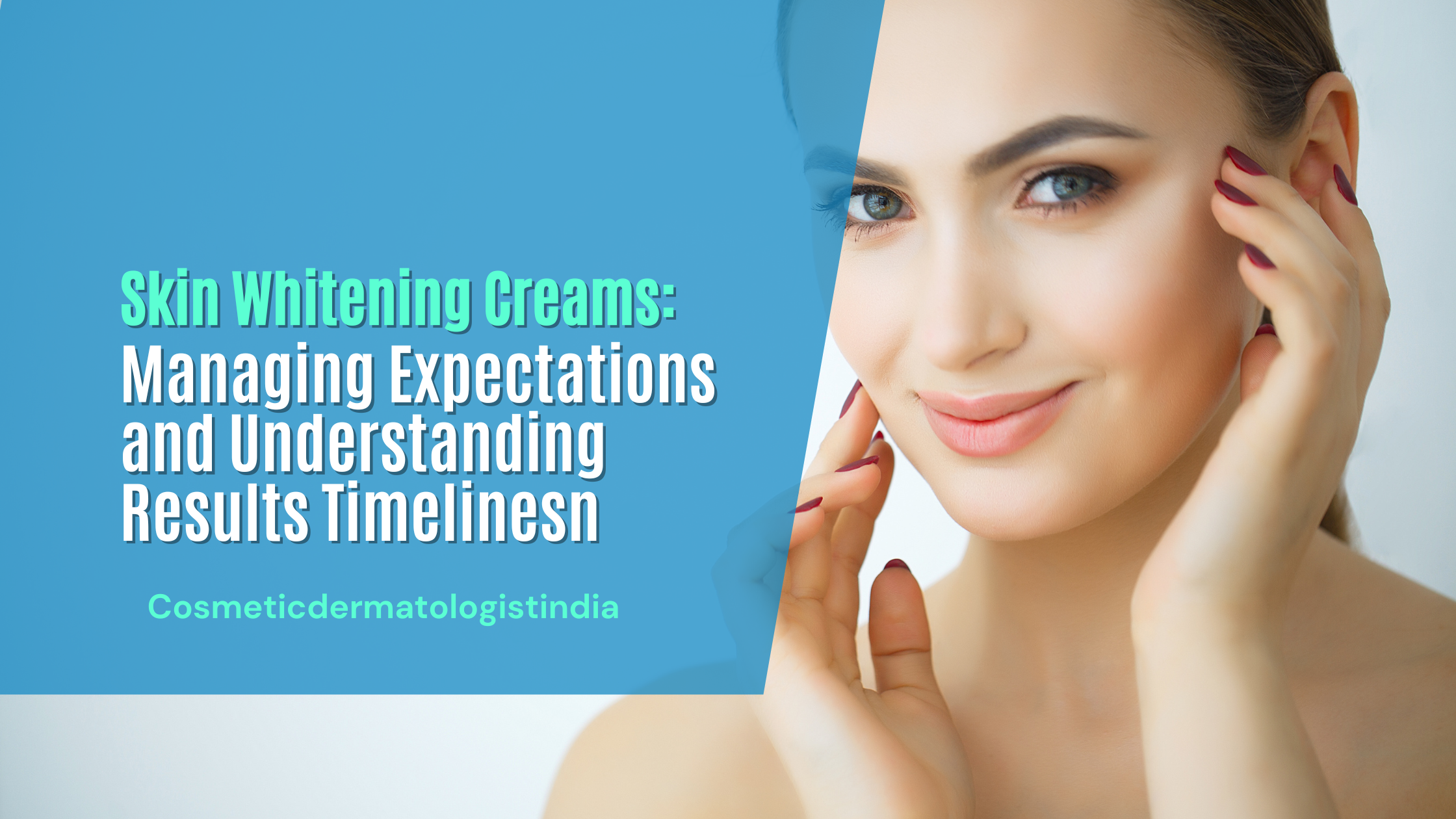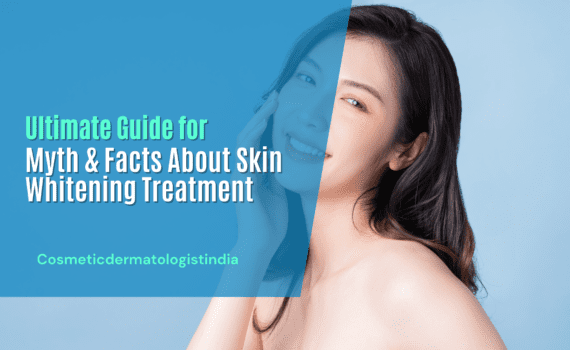
Skin Whitening Creams: Managing Expectations and Understanding Results Timelines
Understanding Skin Whitening Creams
Sandalwood, rice powder, turmeric, milk, saffron, etc. – the quest to get a fairer smoother skin dates back years and centuries and spans across continents. When we look at each other, there are many things that we notice such as manners and how they look and this is perceived through a set of filters such as ethnicity, gender, and socio-economic status of which skin color is a great factor.
Skin whitening creams are not exactly a modern invention. From the ages of lead-based paint to rice flour, to gram flour and turmeric pastes, to sandalwood combinations, the history of skin whitening creams goes back centuries.
While in the past it was about hiding the actual color of the face, modern creams focus on suppressing melanin production and promoting the dermal cell turnover that reduces melanin speedily. Then there are oral skin whitening products that contain products like vitamin C and tranexamic acid that aim to lighten the freckles and melasma which are better than bleaching products.
There are many reasons why you might gravitate towards skin whitening or brightening creams to lighten the skin. For example, sun tanning might have left the skin blotchy and uneven or the hyperpigmentation makes the skin unsightly.
Even acne scars can cause many people to feel less about themselves or you might just want a lighter or even complexion. these creams are the least costly when talking about skin whitening treatment cost in Mumbai.
It is a commonly known fact that the skin gets its color from melanin. The job of this pigment is that help protect the skin from UV radiation and environmental damage. It also protects the injury sites and this is the reason that scarring especially acne scarring appears darker than the surrounding skin.
Age spots mean that that area of skin has higher concentrations of melanin. It takes about four weeks for the melanin to reach the top layers of the skin.
How do skin-lightening creams work?
Skin lightening creams are applied topically on the skin and the active ingredient in them penetrates the skin and destroys the melanin to even out your complexion and lighten the skin for a few shades.
The effectiveness of the skin brightening creams, how long they last, and how often to apply are some commonly discussed issues but one question that often gets unanswered is how long it takes these creams to work. When you should decide whether it is time to throw it in the bin or keep using them is an important question that needs the right answers.
Skin whitening creams turn down the extent of melanin expression and hence on average the results of the skin creams are hardly likely to show before four weeks of consistent and daily use. The skin does not clear and results don’t show up immediately.
The outer layers of the skin shed and new skin cells replace the dead flakes and they fall off. This cycle differs for everyone. Hence any changes the cream does will take a minimum of four weeks to show themselves.
The longer you keep using the cream, the more its benefits. There is no defined duration in which a cream will reach its peak effectiveness. good dermatologist in Mumbai suggests that with right use the skin color becomes lighter, the tone is evened out and scarring and pigmentation fade. How long the skin whitening cream takes the work will depend on many factors such as
- The amount and type of skin that you want to treat
- The strength of active skin lighting ingredients in the cream formula
- How consistently do you use the cream on the skin
- The natural exfoliation rate of the skin
- How well you protect your skin from harmful sunlight and other factors that can damage the skin.
There are usually four categories of skin-lightening treatments
- Ineffective treatments such as creams promise instant results but are usually fraudsters such as snake oil. Since this category is not highly regulated, it is quite common for people to make false claims about ineffective results. Mostly they are poorly made creams promising overnight results and you can use them for years with no results.
- Slow treatments are the most common ones and they are available in OTC variety or on the pharmacy shelves and even online. They work but take their own sweet time. They target the cells that produce melanin in the deep dermal layers and destroy them. The skin brightening or lightening process takes time. The creams can take from anywhere to a week or four weeks to start showing results.
- Fast treatments are the ones that have higher concentrations of active ingredients along with synthetic chemicals rather than natural ingredients. These include laser treatments and some skin whitening creams which show results in as little as seven days. They attack the melanin and not the cells that produce it.
Lower concentration of active ingredients gives slow results and high concentrations give faster results but also can do more damage to the skin if not done as per instructions. When shopping for skin whitening creams make sure that you know what the ingredients can do for you.
Here is an overview of skin-whitening active ingredients
1. Hydroquinone:
It’s one of the most potent skin-lightening agents. Results can often be noticed within a few weeks to a few months of consistent use. However, prolonged use of high concentrations should be monitored due to potential side effects like skin irritation or rebound hyperpigmentation.
How to Use: Follow the instructions provided with the product. Usually, it’s applied directly to the affected areas once or twice a day. Use a thin layer and avoid contact with eyes, mouth, and broken skin.
Precautions:
- Always perform a patch test before using hydroquinone to check for any adverse reactions.
- Limit sun exposure and use sunscreen daily as hydroquinone can increase sensitivity to sunlight.
- Prolonged use of high concentrations may lead to side effects like skin irritation or rebound hyperpigmentation.
- Contact a dermatologist, especially if using higher concentrations or experiencing any adverse reactions.
2. Kojic Acid:
Visible results might be observed within a few weeks to a couple of months with consistent application.
How to Use: Apply the product to affected areas once or twice daily. It’s often found in soaps, creams, and serums.
Precautions:
- Like with other skin-lightening agents, perform a patch test first.
- Some individuals might experience skin irritation or allergic reactions. Discontinue use if irritation occurs.
- Avoid sun exposure and use sunscreen as kojic acid may increase skin sensitivity.
3. Arbutin:
Similar to hydroquinone but considered milder, it may take several weeks to a few months to see noticeable effects on skin tone.
How to Use: Apply as directed by the product instructions, generally once or twice a day on the affected areas.
Precautions:
- Patch testing is recommended to check for any adverse reactions.
- Use sunscreen regularly to prevent further pigmentation and protect the skin from UV damage.
4. Azelaic Acid:
Depending on the concentration and individual response, improvements might be seen within a few weeks to a couple of months.
How to Use: Apply a thin layer to the affected areas once or twice a day.
Precautions:
- Some individuals might experience mild irritation, especially at the beginning of use.
- Sunscreen is crucial as azelaic acid can increase skin sensitivity to sunlight.
5. Vitamin C (Ascorbic Acid):
Results can vary, but with consistent use over a few weeks to months, improvements in skin tone and reduction in pigmentation might be noticeable.
How to Use: Apply topically once or twice a day, as directed.
Precautions:
- Store vitamin C products properly as they can degrade when exposed to light or air.
- Some people may experience mild irritation. Discontinue use if irritation persists.
6. Licorice Extract:
Its effects might become apparent after a few weeks to a couple of months with regular use.
How to Use: Follow the product instructions for application frequency and amount.
Precautions:
- Patch testing is recommended.
- Discontinue use if any adverse reactions occur.
7. Niacinamide (Vitamin B3):
It usually takes several weeks of consistent application to observe visible improvements in skin tone and pigmentation.
How to Use: Apply as directed, typically once or twice daily.
Precautions:
- Niacinamide is generally well-tolerated but discontinue use if irritation occurs.
- It’s compatible with most other skincare ingredients.
General Precautions:
- Always perform a patch test before applying any new product to ensure you’re not allergic or sensitive to it.
- Avoid using multiple potent skin-lightening ingredients simultaneously without professional advice to prevent skin irritation or adverse reactions.
- Consistently use sunscreen (SPF 30 or higher) during the day to protect the skin from further pigmentation and sun damage.
- Consult a dermatologist or skincare professional before starting any new skin-lightening regimen, especially if you have sensitive skin or any underlying skin conditions.
The skin whitening treatment cost in Mumbai varies with the type of cream you use, the duration you want to use it for, and if there are other treatments done along with it.







